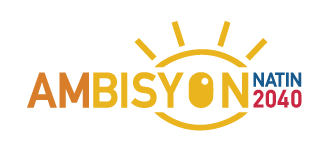Orlando Oxales (The Standard)
A 2014 study in the UK found a link between commuting and personal well-being. Each additional minute someone spends on the road, the study said, affects a person’s anxiety, happiness, and overall wellbeing. In Manila, where thousands line up for hours to take the train and a sudden torrential downpour can spell instant “carmageddon,” citizens don’t need to be told this. It is a truth that they know intuitively.
Aside from the P3 billion or so that the economy loses everyday due to traffic, it is perhaps the daily suffering of millions of commuters that is the best argument to find a decisive and long-term solution to the capital’s crumbling transportation infrastructure. It is impossible to account for all the wasted man hours lost to gridlock, precious time that could have been spent either in productive work or in quality time with families and loved ones.
The solutions can’t come quickly enough. The Duterte administration’s trumpeting of a “Golden Age of Philippine Infrastructure,” indicates that the president’s economic managers understand the gravity of the problem and the centrality of infrastructure in uplifting the lives of millions of suffering Filipinos. The administration targets to roll out 17 Public-Private Partnership, or PPP, projects by the end of the year. A total of 53 others are in the pipeline.
Policy experts, in the last Stratbase ADRi roundtable discussion on Dr. Epictetus Patalinghug’s special paper on “Infrastructure and Economic Growth: The Philippine Experience” saw the potential of the proposed “Hybrid PPP (Public-Private Partnership)” being recommended by Department of Budget and Management Secretary Ben Diokno as a viable option to address the urgency of the country’s gargantuan infrastructure woes. Following this strategy, the government completes a project then transfers it to the private sector for maintenance, operations, and marketing.
The logic is quite simple. The government has a distinct comparative advantage during the construction stage; it has the means to borrow at lower rates via official development assistance from foreign governments or low-interest loans from multinational lenders, and it doesn’t have to consider return on investment in computing project costs. “We don’t even need to borrow money abroad because we have excess liquidity,” Diokno was quoted as saying. The private sector, on the other hand, has the comparative advantage in project management and marketing, areas in which it has demonstrated key expertise.
Lessons from two PPP projects support taking on the Hybrid PPP strategy. The Daang Hari Tollway Project, now referred to as the Muntinlupa-Cavite Expressway, was completed beyond schedule due to the rigorous process of the interagency Investment Coordination Committee, or ICC. It would have been completed earlier if it was handled by the Department of Public Works and Highways.
The Department of Education’s public school infrastructure projects have been criticized by a government official and even infrastructure economists within the National Economic Development Authority for being too expensive. For the same quality of project, a DPWH-commissioned construction company could have built the buildings at a much cheaper rate.
Aside from pricing and speed, the proposed Hybrid PPP also guarantees that the projects are pursued based on the government’s infrastructure plan and at the same time minimize unsolicited proposals that build the most profitable projects instead of the most pressing ones that ensure network connectivity, something that is crucial when the goal is to remedy a capital’s transportation woes.
The direct relationship between infrastructure and economic growth had long been settled. For the Philippines, especially relative to its neighbors, the infrastructure gap has long been identified as one of the major stumbling blocks to a sustainable growth. Decades of underinvestment have resulted in the lamentable state of Manila’s roads, airports, seaports, and rail facilities, among others.
But beyond the numbers, the urgent need to start building now is perhaps best underscored by the daily scene at North Avenue Station of the MRT, where the line stretches for multiple blocks and thousands queue for hours, only to squeeze themselves in cramped coaches that periodically break down. This daily hell for many of our countrymen needs to stop.
